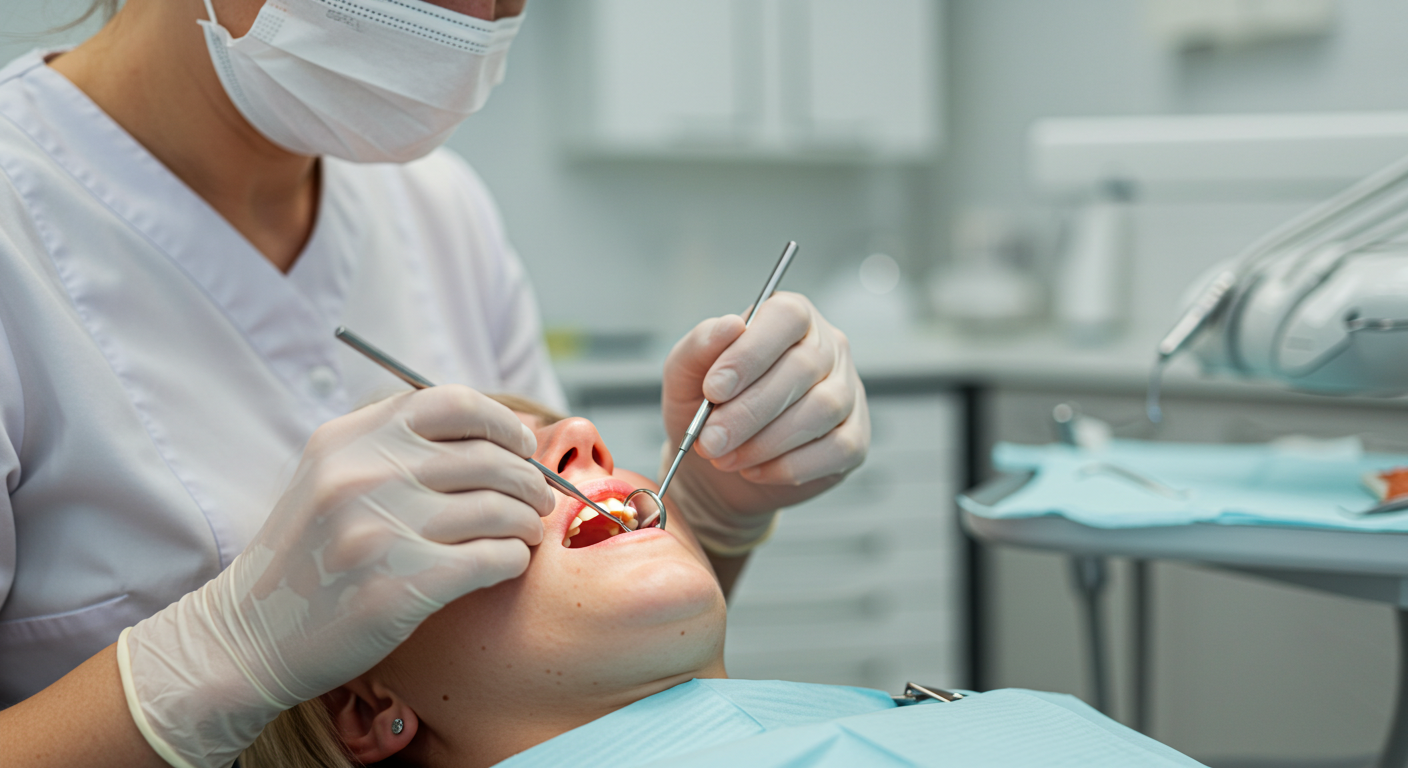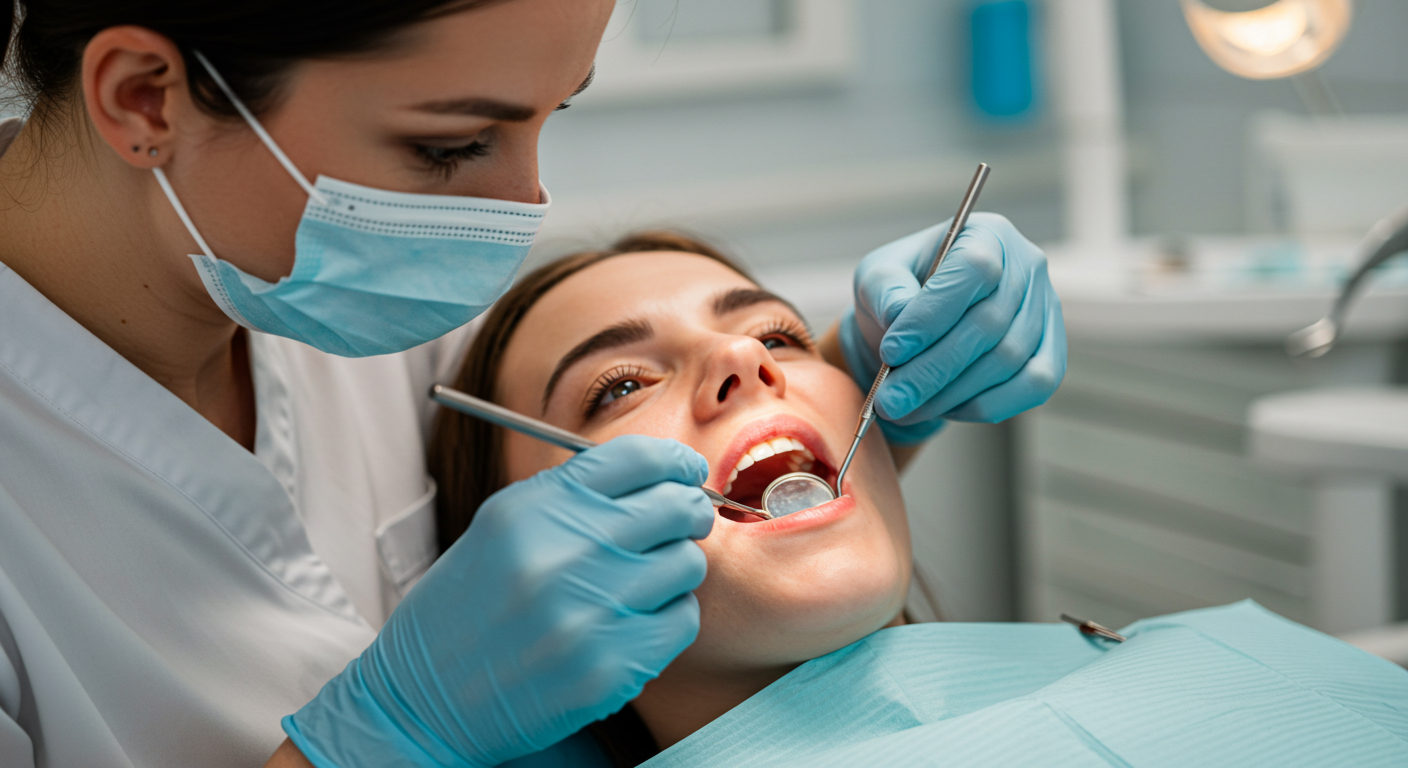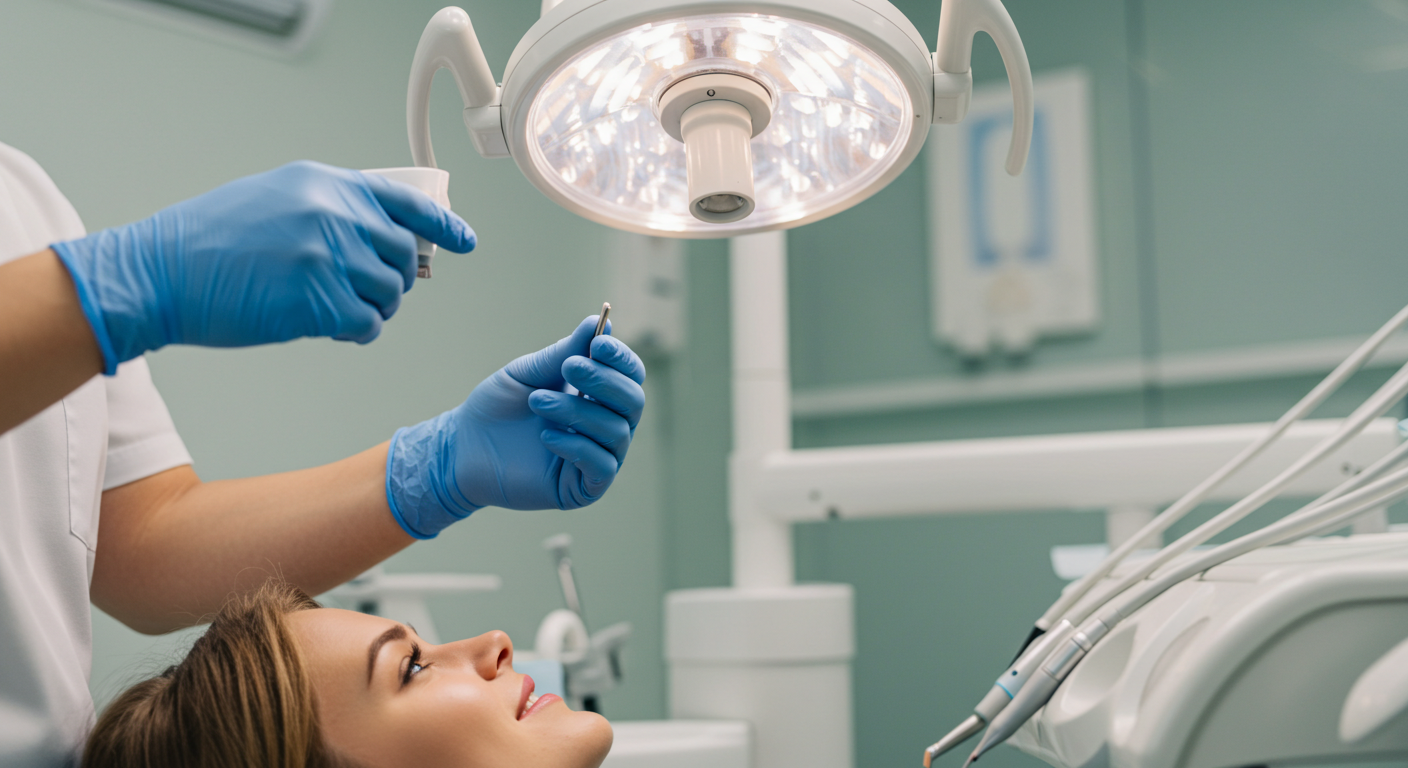Contents

What is Dental Scaling and Root Planing?
Rigorous oral hygiene is the key to a healthy smile. However, brushing and flossing are sometimes not enough to dislodge all the bacteria and tartar that build up, especially below the gum line. If a standard cleaning is no longer sufficient, your dentist may recommend a more thorough treatment: dental scaling and root planing.
What is it exactly? Is it painful? Is it really a "horror story" as some testimonials suggest? Let's take a closer look at this common periodontal procedure.
What is Scaling and Root Planing?
It is a deep cleaning procedure performed by a dentist or periodontist to remove tartar and bacterial plaque that have accumulated below the gum line, along the roots of the teeth. This treatment aims to treat gum diseases like early or moderate periodontitis.
Scaling vs. Root Planing: What's the Difference?
The terms are often used together because the procedure combines two distinct actions:
- Scaling refers to the removal of plaque and tartar from the tooth surface, both above and below the gum line.
- Root Planing is the specific process of smoothing the root surfaces of the teeth. This makes it more difficult for plaque to adhere and helps the gums reattach firmly to the teeth.
Essentially, scaling is the "cleaning" part, and root planing is the "smoothing" part. Together, they form a comprehensive non-surgical treatment for gum disease.

Standard Cleaning vs. Scaling and Root Planing: Which Do You Need?
These two treatments target tartar but address different needs:
- A Standard Cleaning (Prophylaxis) is a preventive, non-invasive treatment. It removes tartar and plaque visible *above* the gum line. It is recommended 1 to 2 times a year for everyone to maintain good oral health.
- Scaling and Root Planing is a therapeutic, more intensive treatment. It removes tartar and plaque lodged *below* the gum line, on the roots, when gum disease (advanced gingivitis or periodontitis) has set in. Red, swollen, or easily bleeding gums are often warning signs.
Scaling and root planing is necessary when tartar has built up below the gum line, creating periodontal pockets.
What Happens During a Scaling and Root Planing Procedure?
Scaling and root planing is a technical procedure that requires precision and method. Rest assured, it is performed under local anesthesia to ensure your comfort.
The procedure is often done in one or more appointments (treating one or two quadrants of the mouth at a time) and generally includes two main phases per treated area:
Step 1: Subgingival Scaling
Once the area is numb, the practitioner uses specific instruments (manual scalers and/or ultrasonic devices) to carefully dislodge and remove the bacterial plaque and tartar present on the root surfaces, below the gum line.
Step 2: Root Planing
After scaling, the root surfaces are meticulously smoothed. The goal is to make them as smooth as possible to hinder the re-adhesion of bacterial plaque and promote the reattachment of the gum to the tooth.
Regular follow-up and impeccable home oral hygiene are then essential to maintain the benefits of the treatment and prevent recurrence.

Benefits, Disadvantages, and Cost of the Procedure
What are the expected benefits?
- Removal of tartar and bacteria below the gum line, the source of inflammation.
- Reduction of gum inflammation (bleeding, swelling).
- Decrease in the depth of periodontal pockets.
- Helps to halt the progression of periodontal disease.
- Prevents long-term bone loss and tooth mobility.
- Improves breath (halitosis).
Are there any disadvantages or dangers?
Scaling and root planing is a common and safe treatment when indicated and performed correctly. "Dangers" are extremely rare. However, some temporary side effects are possible:
- Tooth Sensitivity: To hot, cold, or sugar, as the roots are cleaned and may be slightly more exposed. This effect usually subsides.
- Moderate Gum Recession: As the gums heal and inflammation reduces, they may recede slightly, making teeth appear longer. This is often a sign of healthy healing.
- Post-operative Discomfort: Mild discomfort or soreness may be felt for a few days, manageable with over-the-counter pain relievers.
Scaling and Root Planing: A "Horror Story"? The Question of Pain
The fear of pain is common. So, is scaling and root planing a "horror story"?
No, scaling and root planing is not a "horror story." Thanks to local anesthesia, the procedure itself is painless.
However, it's true that some discomfort or sensitivity can occur after the session, once the anesthesia wears off, and last for a few days. This discomfort is normal and manageable. The term "horror story" often comes from testimonials where the anesthesia may not have been sufficient or from more pronounced post-operative reactions, but this is not the typical experience.
What is the Cost of Scaling and Root Planing?
The cost of scaling and root planing in the US depends mainly on the number of quadrants of the mouth that need treatment. The fee per quadrant can range from $200 to $450, meaning a full-mouth treatment can cost from $800 to over $1,800.
A precise quote is essential. Most dental insurance plans provide coverage for this procedure, often classifying it as a "major" or "periodontal" service, typically covering 50-80% of the cost after the deductible is met.

Scaling and Root Planing and Orthodontics
Good gum health is paramount before starting any orthodontic treatment (with braces or aligners). Moving teeth in the presence of inflamed or infected gums can worsen the condition.
That's why your orthodontist or dentist will always check the condition of your gums. If periodontal disease is detected, a periodontal cleaning, potentially including scaling and root planing, will often be necessary *before* starting orthodontics.
Frequently Asked Questions About Scaling and Root Planing
Can I smoke after the procedure?
Smoking is a major aggravating factor for periodontal diseases and impairs healing. It is strongly discouraged to smoke after scaling and root planing. Ideally, one should quit altogether, but at a minimum, refraining for 48-72 hours after the procedure is crucial to limit the risk of infection and promote healing.
Is scaling and root planing always necessary?
No, this treatment is only indicated if your dentist diagnoses periodontal disease (usually early to moderate periodontitis) with the presence of subgingival tartar and periodontal pockets. For simple gingivitis or as a preventive measure, a standard cleaning is sufficient.
Is some bleeding normal afterward?
Yes, slight bleeding or oozing from the gums is normal for the first few hours, or even the first day after the procedure. This subsides quickly. If the bleeding is persistent or heavy, contact your dentist.
How often does it need to be done?
Scaling and root planing is not a routine annual treatment like a standard cleaning. It is performed to treat an existing condition. After the initial treatment, maintenance involves rigorous hygiene and regular periodontal maintenance appointments with the dentist (often every 3 to 4 months), which include a thorough cleaning but not necessarily a full repeat of the scaling and root planing procedure.
What can I eat after scaling and root planing?
Your gums and teeth may be sensitive. It is recommended to wait until the anesthetic has worn off before eating. Stick to a soft or liquid, lukewarm or cold diet for the first few days. Avoid very hot, very cold, spicy, acidic, hard, or sticky foods that could irritate the treated areas.
